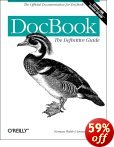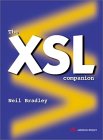Principles of Separating Content from Presentation
There are principles of separation that can be immensely useful in building well-engineered, text-based web pages with XML, XSLT, CSS, and HTML. An overarching objective is to use XML to structure content and XSLT and CSS to format it in a way that minimizes redundancy and maximizes flexibility, including the capability to repurpose content and publish it in various formats. Most of the principles listed below are best applied to narrative-oriented documents that will be published as white papers, technical manuals, help files, essays, and so forth. Keep in mind that these principles are merely a guide and that the list of exceptions is long: Your data, purpose, audience, delivery format, and other factors will influence how you engineer your system's own matrix of structure, metainformation, parameters, content, and presentation. 
- XML documents: Strive to maximize the content that exists as text, not as tags, in your XML documents. In other words, content that you expect authors or end users to see should usually be set as content, not as elements or attributes. Avoid setting content as tags, either as elements or attributes, even if doing so comes at the cost of some redundancy; it's easier for content authors to work with content that is out in the open, not hidden as the value of attributes or as elements themselves. Instead, use elements to describe the structure or content of your material; use attributes to capture metainformation about the content or its structure and to encode parameters that are used to process the content. Place recurring content, especially content that may change, such as the name of a product under development, in entities. Shy away from placing formatting or styling information in your XML documents, though it may be expedient to include some table and image formatting instructions.
- XSLT stylesheets: Place as much formatting information as possible in your XSLT stylesheet and eschew using it as a container for standard content. Instead, place content out in the open in your XML documents even if doing so comes as the expense of a little duplication. However, highly variable content, such as the date of publication and the version number, may be best placed in the XSLT stylesheet as entities. It may also benefit you to make exceptions for content that varies by audience, as in the case of parameterized settings used in internationalization.

- Cascading Stylesheets, as I mentioned above, should complement the XSLT stylesheet by containing as many as possible of the formatting code's visual styling properties.
In the examples that accompany this and later tutorials in the series, you'll see some of these principles at work.
Related Pages
The tutorials in this series proceed as follows:
- An Introduction to XML
- Structuring Documents in XML
- Developing a Document Type Definition
- Attributes and Entities in DTDs
- An Introduction to XSL
- Using XSLT to Separate Content from Presentation